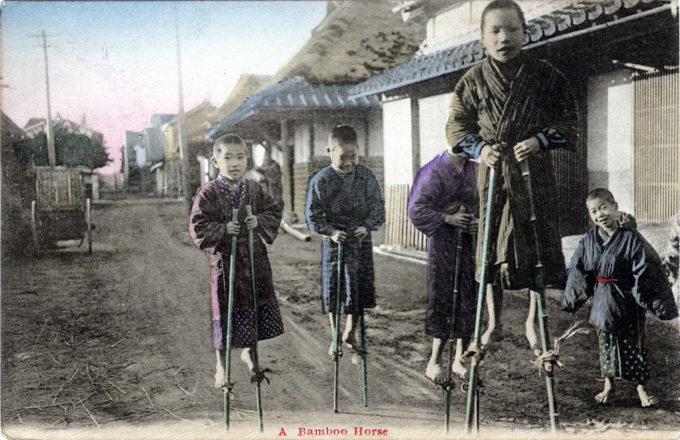See also:
Uta-garuta (“Poem cards” game), c. 1930.
The Game of “Go”, c. 1910.
Hanetsuki (Japanese Badminton), New Year’s cards, 1910 & 1939.
“It is unclear just how or when stilts first came to Japan. But, written mentions of stilts can be traced back to the classical Heian Period (794-1185 CE) and the medieval Muromachi shogunate (1336-1573 CE) of Japanese history.
“In fact, medieval warrior values were first summarized in a document titled Chikubasho (trans. ‘Bamboo stilt anthology’) in 1383 by a deputy shogun named Shiba Yoshimasa.
“Chikubasho detailed the explicit rules guiding the behavior of the samurai class, and which stressed the importance of cultivating both the martial arts and the traditional four scholarly Confucian accomplishments: games of strategy, scholarship through skilled calligraphic copies of the classical texts, music, and painting.
“Takeuma (lit. ‘bamboo horse’) is the Japanese version of stilt walking and is thought of mainly as a children’s activity. The bamboo poles typically have perpendicular footrests attached to them, and it took quite a bit of practice to be able to walk using the stilts.
“The first step to using takeuma was by trying to keep one’s balance while on top of the footrests. After which, the next practice was taking steps using the stilts. When one became adept at walking and running in stilts, then they could proceed on to more advanced moves, including racing and acrobatic performances.”
– Wikipedia


